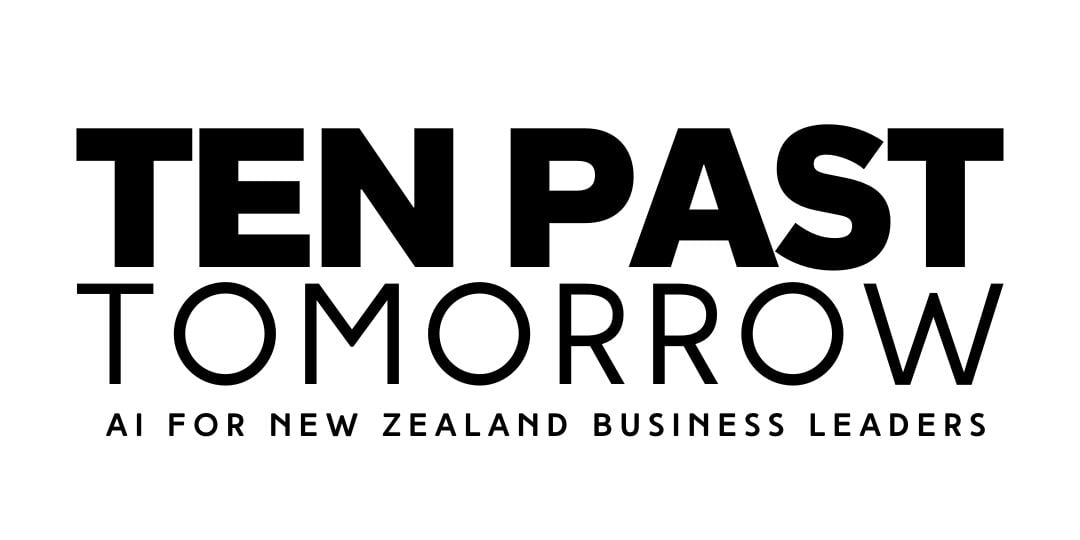Deep Dive Guide: The key steps to implement generative AI into your business
Welcome to another of my comprehensive guides, this one written to reveal the core steps I use when advising New Zealand business leaders how to implement generative AI into their businesses. This guide will arm you with crucial insights and a robust understanding, all within a crisp 20-minute read...
As the generative AI revolution continues to reshape industries, New Zealand businesses of all sizes are increasingly embracing AI to streamline operations, enhance efficiency, and drive innovation.
However, for many New Zealand business leaders I talk with, although they are aware in broad terms that generative AI holds great potential for them and their businesses, they commonly tell me that venturing into the world of AI is a daunting step.
To ease that step, I’ve written this comprehensive guide to walk you through the steps and considerations for successfully implementing generative AI into your business.
Think of this as your strategic roadmap to taking the first steps towards easing generative AI into your business, then taking the successive steps towards becoming an AI-first organization.
In the sections ahead, I'll help you assess your organization's AI readiness with 12 key questions, and recommend how to build a solid foundation for generative AI adoption. I'll explore the importance of building AI competencies across your organization, from the C-Suite to employees at every level. By fostering an AI-literate company culture, you'll create a thriving environment for innovation.
I will then delve into identifying opportunities for generative AI solutions, providing you with practical approaches to pinpoint areas where AI may be suitable for pilot test cases, then later where they can have significant company-wide impact.
With these insights, you'll be able to develop a tailored generative AI implementation strategy, aligning AI adoption with your business objectives and vision.
As responsible New Zealand business leaders, we'll also address the ethical and legal considerations of generative AI implementation, and I’ll guide you through the process of establishing a robust AI governance framework.
By the end of this guide, you'll have a clear understanding of the key steps and considerations for becoming an AI-first business. I aim to empower New Zealand businesses to embrace continuous improvement and innovation, setting them on a path to long-term success in the AI-driven world.
Assessing generative AI readiness with 12 key questions
 Are you ready?
Are you ready?
Before diving into the vast ocean of generative AI implementation, it's essential to ensure your business is ready to embrace this powerful technology and has the necessary foundations upon which to construct a successful generative AI transformation.
To help you evaluate your organization's preparedness, I've compiled 12 crucial questions to prompt the high-level thinking necessary to prepare you for the early stages of your generative AI transformation.
-
Strategic alignment: Have you identified the strategic goals that generative AI can help you achieve? Aligning generative AI initiatives with your business objectives ensures a cohesive and purpose-driven approach.
-
Leadership commitment: Does your leadership team recognize the value of generative AI and support its integration into your business processes? Top-down commitment is critical for fostering a culture of innovation and collaboration.
-
Data availability: Do you have access to high-quality, relevant data to train and refine generative AI tools? Data is the fuel that powers generative AI engines, and its quality and quantity directly impact the AI's performance.
-
Data infrastructure: Is your organization's data infrastructure capable of handling the demands of generative AI systems? Robust data storage, processing, and management capabilities are essential for efficient generative AI operations.
-
AI talent: Do you have a team with the necessary AI expertise (not common in New Zealand), or do you need to add hires, or upskill your existing workforce? Building a strong foundation of generative AI knowledge and skills is vital for successful implementation.
-
Organizational culture: Is your company culture receptive to embracing generative AI and the changes it brings? An adaptive and agile culture ensures smoother integration and long-term success.
-
Budget allocation: Have you set aside a realistic budget for AI development, deployment, and maintenance? Financial planning plays a pivotal role in the sustainability of AI initiatives.
-
Use case identification: Have you identified specific use cases where generative AI can deliver tangible benefits to your business? Focusing on high-impact applications can drive quick wins and build momentum for broader AI adoption.
-
Change management: related to #6 above, are you prepared to manage the organizational changes that generative AI implementation will entail? Effective change management strategies can help navigate challenges and ensure a smooth transition.
-
Ethics and governance: Have you considered the ethical implications of generative AI deployment and established guidelines for responsible AI use? Ethical AI adoption fosters trust and credibility, both internally and with customers.
-
Performance measurement: How will you measure the success and performance of your generative AI initiatives? Establishing clear performance metrics helps track progress and quantify the value of AI implementation.
-
Scalability: Is your organization prepared to scale generative AI solutions as your business grows and evolves? A scalable generative AI strategy ensures you can reap the benefits of AI even as your business landscape changes.
By carefully considering these questions, you'll gain invaluable insights into your organization's AI readiness. With a clear understanding of your strengths and areas for improvement, you can lay the foundation for a successful AI transformation that drives lasting value for your business.
Building generative AI competencies across the organization
 "You have no idea how hard this competency machine was to build"
"You have no idea how hard this competency machine was to build"
Just as a master chef requires a well-trained kitchen team, successful AI implementation calls for a workforce skilled in the art of generative AI.
Building generative AI competencies across your organization helps ensure everyone is on the same page, fostering a collaborative environment primed for AI-driven innovation.
Let's explore how to cultivate AI expertise at every level of your organization in New Zealand.
AI education and training for the C-Suite
For generative AI to truly take root, it must be embraced by the leadership team. There’s no room for negotiation on this point.
C-Suite executives play a crucial role in setting the strategic direction, allocating resources, and championing generative AI initiatives. To effectively lead the AI charge, top New Zealand executives should:
-
Gain a high-level understanding of generative AI technologies, their capabilities, and limitations. There’s no need for New Zealand execs to become data scientists overnight, but they must have at least a base-level understanding of what generative AI is, and what it should and shouldn’t be expected to be able to achieve.
-
Develop a keen sense of curiosity about how generative AI can drive value for the business.
-
Stay informed about high-level generative AI trends and best practices to make well-informed decisions.
-
Executive workshops, seminars, and tailored training programs can help bridge the AI knowledge gap and empower New Zealand C-Suite leaders to make confident decisions about AI integration.
Generative AI education and training for New Zealand managers and team leads
Managers and team leads act as the linchpins connecting the C-Suite vision with on-the-ground execution.
In an AI transformation, they are responsible for translating AI strategy into actionable plans and ensuring a seamless integration of AI tools into daily operations.
To excel in this role, they should:
-
Acquire a solid understanding of generative AI technologies relevant to their domain.
-
Learn how to evaluate and select the right generative AI solutions for their department. This often includes decisions about whether off-the-shelf or bespoke solutions are the best fit for the desired tasks and outcomes.
-
Develop skills to manage AI-driven projects and teams effectively.
-
Training programs, online courses, and workshops tailored to specific job functions can help managers and team leads build the necessary AI skills to guide their teams through the AI transformation.
Generative AI education and training for employees
Employees are the lifeblood of your organization, and their engagement with generative AI is going to be essential for long-term success.
To harness the full potential of generative AI, every employee should:
-
Understand the basics of generative AI and its relevance to their specific job function.
-
Become aware of what is AI fear-mongering, what is over-hype, and what is realistic coverage of AI in the media. Understand that AI is here to augment their roles, not replace them!
-
Develop skills to effectively use generative AI tools and technologies in their daily work.
-
Embrace a growth mindset and be open to continuous learning and adaptation.
-
A mix of online courses, in-person training sessions, and mentorship programs can provide employees with the AI education and support they need to thrive in an AI-driven workplace.
Integrating generative AI literacy into New Zealand company culture
Generative AI competency shouldn't be confined to silos within your organization.
Instead, it should permeate your company culture, creating an environment where AI knowledge and innovation are nurtured and celebrated. Here are some strategies to embed AI literacy into your organization's DNA:
-
Internal communication: Promote AI awareness and understanding through regular communication channels, such as newsletters, intranet updates, or town hall meetings.
-
Knowledge sharing: Encourage cross-functional collaboration and knowledge sharing through AI-focused workshops, seminars, or internal hackathons. Even internal company "book clubs" often have great success and are an enjoyable way to promote AI literacy and conversations among employees.
-
Continuous learning: Foster a culture of ongoing learning by offering access to AI resources, courses, and training opportunities.
-
Incentivize innovation: Recognize and reward employees who contribute to AI innovation or demonstrate exceptional AI-driven results.
By investing in AI education and training across your organization, you can create a workforce that's not only skilled in the art of AI but also equipped to embrace new challenges and opportunities in the rapidly evolving AI landscape.
It’s vitally important to realise that at the time of writing (early 2023), almost no New Zealand companies are doing this.
So, with a strong foundation of AI competencies, your business can become well-positioned to harness the power of first-mover advantage in the AI world, and drive lasting success in the age of digital transformation.
Identifying opportunities in New Zealand for generative AI solutions
 I see you, opportunity!
I see you, opportunity!
Once your business is well-prepared and AI-literate, it will be time to focus on uncovering the best opportunities to apply generative AI solutions.
In this section, I'll explore two practical approaches to pinpoint areas where generative AI can deliver the most significant impact on your business: the use-case model approach and the problem-based model approach.
The use-case model approach for identifying generative AI applications
The use-case model approach involves examining specific scenarios or processes within your organization that can benefit from AI implementation.
This method helps you evaluate the feasibility and potential return on investment (ROI) of each use case.
Follow these steps to identify and prioritize generative AI opportunities using the use-case model approach:
-
Brainstorm potential use cases: Engage cross-functional teams to identify areas where generative AI could drive improvements, such as cost reduction, revenue generation, or enhanced customer experiences.
-
Assess feasibility: Evaluate each use case based on the availability of relevant data, technical infrastructure, and AI expertise within your organization.
-
Estimate ROI: Determine the potential ROI for each use case, considering factors such as implementation cost, time savings, and potential revenue growth.
-
Prioritize use cases: Rank the use cases based on feasibility and ROI, focusing on high-impact applications that can deliver quick wins and build momentum for broader AI adoption.
The problem-based model approach for identifying generative AI applications
The problem-based model approach starts by defining the business challenges you wish to solve and then evaluating whether generative AI can offer viable solutions.
This approach encourages a more strategic perspective, aligning AI initiatives with broader business objectives.
To identify generative AI opportunities using the problem-based model approach, follow these steps:
-
List your business challenges: Outline the most pressing issues your organization faces, such as operational inefficiencies, market competition, or customer satisfaction.
-
Analyze each challenge: Break down each challenge into smaller, more manageable components to better understand the underlying problems.
-
Identify potential generative AI solutions: Investigate how AI technologies can address these problems by automating tasks, improving decision-making, or uncovering hidden insights.
-
Evaluate the impact: Assess the potential impact of each generative AI solution on your business, considering factors such as time-to-value, scalability, and competitive advantage.
-
With a list of high-priority generative AI opportunities in hand, you'll be well positioned to develop a tailored AI implementation strategy that aligns with your organization's unique needs and goals. By focusing on the most impactful use cases, you'll be able to demonstrate the value of generative AI to stakeholders and pave the way for more extensive AI adoption across your business.
Remember, the key to AI success lies in balancing short-term wins with long-term strategic goals.
Start by implementing generative AI solutions that deliver immediate benefits and build momentum, while keeping an eye on the bigger picture to ensure a sustainable, AI-driven future for your organization.
As you continue to identify opportunities for AI solutions, you'll unlock new possibilities for growth, innovation, and competitive advantage in the ever-evolving world of AI.
In the next section, I’ll describe more about the process of how to begin with smaller, quick-win projects to cut your generative AI teeth, in order to gain the experience, confidence and aptitude to then implement larger-scale AI implementations across your business.
Developing a generative AI implementation strategy in New Zealand
"Alright, let's get strategic about this strategy"
From your use of the problem-based model, the use-case model, or perhaps a hybrid of the two, you’ll soon have a clear understanding of your organization's AI readiness and a well-defined list of generative AI opportunities.
At this stage you’ll feel equipped to develop a comprehensive generative AI implementation strategy.
Much like a master architect, your goal is to create a blueprint that outlines the path from your current state to a fully AI-enabled future.
In this section, I'll discuss key elements of an effective generative AI strategy, including piloting quick-win projects, strategically rolling out larger AI initiatives, aligning AI efforts with business objectives, preparing data, and addressing ethical considerations and AI governance.
Piloting quick-win generative AI projects
Starting with smaller, quick-win generative AI projects offers several benefits: they're faster to implement, less resource-intensive, and provide tangible results that build confidence and momentum for larger AI initiatives.
Note that it is almost always the best tactic to design your AI pilot projects as internal projects. Designing projects that benefit the internal operations of your business, allows for a higher tolerance for failure, and you can more easily implement a rapid process of feedback and iteration.
Also of note is that when designing internally-focused AI pilot projects, is that the majority of the time they are focused on cost reduction and efficiency increases.
To pilot a quick-win AI project, I recommend following these steps, and I use them as a template when working with clients myself:
-
Select one or two high-impact use cases: Choose a use case(s) from your (use-case model or problem-based model) priority list that offers significant ROI and can be implemented relatively quickly.
-
Assemble a cross-functional team: Bring together a diverse group of experts, including AI specialists, domain experts, and stakeholders, to collaborate on the project.
-
Develop a proof of concept: Create a small-scale prototype that demonstrates the feasibility and value of the AI solution.
-
Go to market: Assess the off-the-shelf solutions that are available against the opportunities to build a bespoke AI solution. Both will have pros and cons when compared against the needs of your use case. In my own consultancy work, I almost exclusively deploy off-the-shelf generative AI solutions for clients.
-
Implement your AI solution.
-
Evaluate and refine: Assess the project's performance against predefined metrics, and iterate as needed to optimize the solution.
Strategic roll-out of larger AI projects
While quick-win projects provide immediate benefits, it's crucial to also plan for the strategic roll-out of larger AI initiatives that can drive long-term, transformative value.
To effectively implement larger AI projects, consider the following steps:
-
Establish a clear vision: Define the overall objectives and desired outcomes of the AI project, ensuring alignment with your organization's broader goals. Note all lessons learned, both positive and negative, from your AI pilot projects already implemented. These lessons will be of the utmost value to you as you look to implement AI solutions of larger scale.
-
Develop a detailed roadmap: Outline the steps, resources, and timelines required to achieve the project's objectives, from initial planning to full-scale deployment.
-
Allocate resources: Ensure the necessary funding, personnel, and infrastructure are in place to support the project's successful execution.
-
Go to market: Exactly as you did in the pilot project phase, you’ll need to assess the off-the-shelf solutions that are available against the opportunities to build a bespoke AI solution. Both will have pros and cons when compared against the needs of your use case.
-
Implement your AI solution.
-
Monitor progress: Track the project's progress against predefined milestones, and adjust the strategy as needed to address challenges or capitalize on new opportunities.
-
Measure success: Continuously evaluate the project's performance against established metrics to quantify its impact and inform future AI initiatives.
Aligning AI strategy with business objectives
For AI to deliver lasting value, it's essential to align your generative AI strategy with your organization's overarching business objectives.
This ensures that AI initiatives are purpose-driven and focused on delivering tangible benefits.
You’re not deploying AI simply because it’s the buzz word on everyone’s lips. You’re deploying AI because of the massively transformative potential it has for your business objectives.
Keep these tips in mind when aligning your AI strategy with business goals:
-
Prioritize strategic objectives: Focus on AI initiatives that directly support your organization's most critical goals, such as revenue growth, cost reduction, or customer satisfaction.
-
Involve stakeholders: Engage key stakeholders from across the organization to ensure buy-in and promote a shared vision of AI-driven success.
-
Communicate the benefits: Clearly articulate the value of AI initiatives to stakeholders, emphasizing the direct connection between AI efforts and business objectives.
Data preparation
High-quality data is the lifeblood of generative AI systems, and preparing data for AI projects is a critical component of your AI strategy.
Thankfully, the developments in recent years in computing power, large language model architecture, and data management tools have all been exponential.
Combined, this means that whereas even until very recently the preparation of data for traditional AI usage necessitated having teams of data scientists and massive internal computing power, nowadays the same results can be achieved with cloud computing and generative AI tools.
To effectively manage data for AI initiatives, consider the following:
-
Identify relevant data sources: Determine which data sources are most relevant to your generative AI objectives, and establish processes for accessing and integrating the data.
-
Clean and preprocess data: Address data quality issues, such as missing values, inconsistencies, or errors, and preprocess the data to ensure it's in a format suitable for AI algorithms.
-
Establish data governance practices: Implement data governance policies and procedures to ensure data privacy, security, and compliance with relevant regulations.
-
Maintain data quality: Regularly monitor and update data sources to maintain data quality and ensure AI models remain accurate and effective over time.
Addressing ethical and legal considerations of generative AI in New Zealand
 The Ten Past Tomorrow ethics department
The Ten Past Tomorrow ethics department
As you embark on the journey to become an AI-powered organization, it's essential to address the ethical and legal considerations that accompany generative AI adoption.
AI implementation brings with it a host of ethical considerations and the need for robust AI governance.
By proactively tackling these issues, you'll not only minimize potential risks but also foster trust among your customers, employees, and partners.
In this section, I'll outline key ethical and legal aspects to keep in mind when implementing generative AI in your business:
-
Transparency: Be transparent about your AI initiatives, clearly communicating how generative AI systems operate, and the rationale behind their decisions, to all stakeholders.
-
Bias and fairness: Actively work to identify and minimize biases in AI algorithms, ensuring they treat different groups fairly and equitably.
-
Privacy and security: Implement strong data privacy and security measures to protect sensitive information and comply with relevant regulations.
-
Accountability: Establish clear lines of accountability for generative AI decisions and outcomes, and develop processes for addressing any unintended consequences.
Developing a comprehensive generative AI implementation strategy is an essential step towards successfully integrating AI into your organization.
By carefully planning and executing AI projects, aligning AI efforts with business objectives, preparing data, and addressing ethical considerations, you'll be well on your way to unlocking the full potential of generative AI and transforming your business for the better.
Data privacy and security
Data privacy is a top concern for both consumers and regulators in New Zealand. Ensuring the responsible handling of sensitive data is paramount for the success of your generative AI initiatives.
Here's some suggestions of how to uphold data privacy:
-
Understand applicable regulations: Familiarize yourself with data privacy laws that affect your organization. The New Zealand is currently making moves to develop bills to regulate AI use in our country. In the meantime, we must take our cues from overseas as to how things might pan out for us in New Zealand. Clues lie in overseas regulations such as the General Data Protection Regulation (GDPR) or the California Consumer Privacy Act (CCPA). New regulations are being deployed and/or written specifically around AI, notably the European Union’s Artificial Intelligence Act and looming FTC rulemaking, and new NIST AI standards in the US.
-
Implement privacy-by-design principles: Integrate data privacy considerations into your generative AI systems from the ground up, ensuring that privacy is not an afterthought.
-
Obtain informed consent: Be transparent about how personal data will be used in AI systems and obtain explicit consent from individuals when required.
Generative AI bias and fairness
Generative AI systems can inadvertently perpetuate or exacerbate biases, leading to unfair treatment of certain groups. This is not an easy challenge to overcome, and is occupying some of the brightest minds in AI on the planet right now.
Despite the scale of the challenge, as a responsible business leader in New Zealand, it should also front of mind for you as you consider how to implement generative AI within your organization.
To promote fairness in your generative AI applications, consider the following steps:
-
Diversify data sets: Ensure that your data sets are representative of diverse populations to minimize the potential for biased generative AI outcomes.
-
Test for bias: Continuously evaluate your generative AI tools and their outputs to identify and mitigate any unfair biases that may arise.
-
Establish fairness criteria: Define fairness goals for your generative AI systems and develop metrics to assess their performance against these criteria.
Generative AI transparency and explainability
Transparent and explainable generative AI not only fosters trust but also demystifies the complexities of AI decision-making processes.
By revealing the logic underpinning AI-generated decisions, it empowers users to fully comprehend the implications of these outcomes. Ultimately, this transparency paves the way for a more confident and informed use of generative AI technology, nurturing a relationship based on trust and understanding between AI and its users.
To promote transparency and explainability in your generative AI initiatives:
-
Document AI processes: Maintain clear documentation of your generative AI tools, data sources, and decision-making processes.
-
Use explainable generative AI tools: Whenever possible, opt for generative AI tools that provide understandable explanations for their outputs.
-
Communicate AI decisions: Clearly convey AI-generated decisions to stakeholders, along with the underlying rationale.
Generative AI accountability and liability in New Zealand
The task of pinpointing accountability and liability for decisions made by AI is a multifaceted issue. The intricate nature of generative AI algorithms often blurs the lines of responsibility, creating a challenging landscape for the introduction of AI into business ecosystems.
As you look to integrate generative AI into your systems, navigating these complexities becomes crucial to maintain fairness and transparency in AI-driven decision-making.
To address these challenges, consider the following:
-
Establish clear responsibility: Define roles and responsibilities for generative AI systems within your organization, ensuring that individuals are held accountable for AI outcomes.
-
Develop contingency plans: Create processes to address any negative consequences that may arise from AI-driven decisions, such as rectifying errors or compensating affected parties.
-
Stay informed on legal developments in New Zealand: Keep abreast of evolving New Zealand regulations and legal precedents related to generative AI, and adjust your practices accordingly.
Addressing AI ethics for New Zealand businesses without in-house data scientists
For businesses that don't have in-house data scientists, managing the ethical aspects of AI can be challenging. However, there are practical steps you can take to address bias, fairness, transparency, and explainability:
-
Leverage off-the-shelf AI solutions: Use AI tools and platforms that have been developed with ethical considerations in mind and offer built-in features to address these issues.
-
Partner with AI experts: Collaborate with external AI consultants or vendors who can provide guidance on ethical best practices and help you implement them in your AI initiatives. (Wink, wink)
-
Train employees on AI ethics: Educate your team about the ethical implications of generative AI and provide resources to help them make informed decisions about AI systems.
By proactively addressing ethical and legal considerations, you'll build a strong foundation for responsible and sustainable AI adoption, paving the way for long-term success in your AI-driven transformation journey. By incorporating the strategies outlined above, you can ensure that your AI initiatives remain compliant with New Zealand regulations, adhere to ethical best practices, and maintain the trust of your customers, employees, and partners.
For New Zealand business leaders who don’t have a dedicated data science team in-house (not many of us!), staying informed about the latest developments in AI ethics and maintaining an open dialogue with your AI solution providers will enable you to navigate the complexities of AI adoption responsibly.
Don't shy away from seeking external expertise or resources to help you understand and tackle the ethical challenges posed by AI.
Ultimately, a proactive approach to addressing ethical and legal considerations will lay the groundwork for a more transparent, accountable, and trustworthy generative AI ecosystem within your organization. By focusing on data privacy, fairness, transparency, explainability, and accountability, you'll create an environment in which AI can thrive and deliver lasting value to your business.
Summary and next steps
 (Your next steps won't require that many steps)
(Your next steps won't require that many steps)
Transforming your business with generative AI is an exciting and rewarding journey that, when approached strategically, can unlock previously unseen levels of growth, cost saving, and innovation.
As a New Zealand business leader, it's essential to thoroughly assess your organization's AI readiness, invest in generative AI education, identify opportunities for generative AI solutions, develop a robust implementation strategy, and address ethical and legal considerations.
As you stride towards transforming your organization into an AI-centric one, there are several key steps to consider.
-
Start by assessing your generative AI readiness. This involves engaging in thoughtful reflection and conversations with your team, guided by the questions proposed in this guide, to spot areas where your organization can bolster its readiness for generative AI integration.
-
Investing in generative AI education is your next crucial step. Construct a thorough training blueprint that aims to nurture generative AI proficiency across your organization. This will ensure everyone is equipped with the necessary skills and understanding to meaningfully contribute to your AI endeavors.
-
Consider also the value of partnering with an organization that possesses deep generative AI knowledge. A trusted ally can spearhead the strategic process, deliver AI education, provide training and guidance, and assist you in deciphering the intricate world of AI adoption. (And yes, that's a subtle hint towards me)
-
Next, identify potential AI opportunities within your organization. This involves a careful examination of your business operations and hurdles to locate areas where generative AI could bring substantial benefits. Prioritize projects that present a balance between potential value and practical feasibility.
-
The development of a comprehensive generative AI strategy is another crucial step. This strategy should outline a clear roadmap for generative AI implementation, taking into account factors like data preparation, project timelines, and ethical considerations.
-
Finally, stay informed and adapt. The world of generative AI is ever-evolving, and it's essential to keep a close eye on the latest developments. Adjusting your approach as needed will ensure your organization remains at the cutting edge of AI-driven innovation.
By taking these steps, you'll be well on your way to harnessing the transformative power of generative AI and reaping its many benefits for your business.
Remember, the journey towards generative AI adoption is an ongoing process, and embracing a culture of learning, collaboration, and adaptation will be key to your long-term success.








